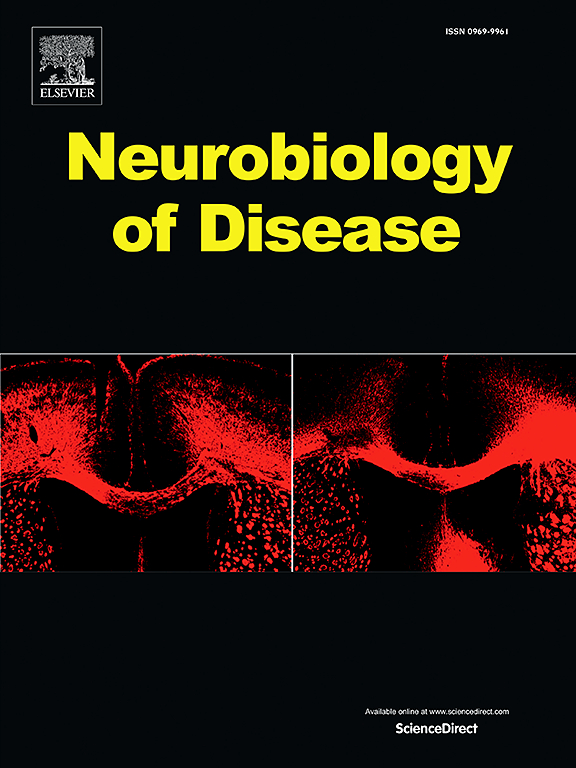帕金森病纯冷漠的低连接模式:动态功能连接视角
IF 5.1
2区 医学
Q1 NEUROSCIENCES
引用次数: 0
摘要
背景:冷漠,目标导向动机行为的下降,是帕金森病(PD)常见的非运动症状。在PD和纯粹冷漠(PD- pa)患者中,多个脑功能网络之间的动态信息交互作用对目标导向行为至关重要,但仍不清楚。因此,本研究采用动态功能网络连通性(dFNC)分析来探讨PD患者冷漠的动态脑网络变化。方法:采用dFNC分析方法,对30例PD- pa患者、37例PD- npa患者和37例健康对照(hc)进行分析,探讨PD- pa脑网络的动态功能连接(FC)模式。结果:7个脑网络最终被识别并配置为4种状态。与PD-NPA患者相比,PD-PA患者在状态1的平均停留时间更长。PD-PA患者状态1的平均停留时间与冷漠严重程度呈正相关。一般情况下,状态1比其他状态低连通。在状态1中,PD-PA患者与PD-NPA患者相比,默认模式网络(DMN)内的网络内FC减少。具体来说,左楔前叶和左内侧额上回(SFGmed)在DMN内的FC减少。结论:PD的冷漠可能与大脑网络的长期低连通性有关,特别是DMN内楔前叶和SFGmed之间的断开,强调网络内和网络之间的信息传递受损是PD冷漠的关键机制。本文章由计算机程序翻译,如有差异,请以英文原文为准。
Hypo-connected pattern in Parkinson's disease with pure apathy: A dynamic functional connectivity perspective
Background
Apathy, a decline in goal-directed motivated behavior, is a common non-motor symptom in Parkinson's disease (PD). The dynamic information interaction between multiple brain functional networks, crucial for goal-directed behavior, remains unknown in patients with PD and pure apathy (PD-PA). This study thus used the dynamic functional network connectivity (dFNC) analysis to explore the dynamic brain networks changes of apathy in PD.
Methods
Thirty patients with PD-PA, 37 patients with PD but not pure apathy (PD-NPA), and 37 healthy controls (HCs) were studied using dFNC analysis to explore dynamic functional connectivity (FC) patterns of brain networks in PD-PA.
Results
Seven brain networks were finally identified and configured into four states. Patients with PD-PA showed longer mean dwell time in State 1 when compared to patients with PD-NPA. Furthermore, the mean dwell time of State 1 positively correlated with apathy severity in patients with PD-PA. Generally, State 1 is hypo-connected than other states. In State 1, intra-network FC within the default mode network (DMN) in patients with PD-PA was decreased compared to patients with PD-NPA. Specifically, the FC of the left precuneus and the left medial superior frontal gyrus (SFGmed) within the DMN was decreased.
Conclusions
Apathy in PD may be related with prolonged low connectivity in brain networks, particularly the disconnection between the precuneus and SFGmed within the DMN, highlighting impaired information transmission within and between networks as a key mechanism of apathy in PD.
求助全文
通过发布文献求助,成功后即可免费获取论文全文。
去求助
来源期刊

Neurobiology of Disease
医学-神经科学
CiteScore
11.20
自引率
3.30%
发文量
270
审稿时长
76 days
期刊介绍:
Neurobiology of Disease is a major international journal at the interface between basic and clinical neuroscience. The journal provides a forum for the publication of top quality research papers on: molecular and cellular definitions of disease mechanisms, the neural systems and underpinning behavioral disorders, the genetics of inherited neurological and psychiatric diseases, nervous system aging, and findings relevant to the development of new therapies.
 求助内容:
求助内容: 应助结果提醒方式:
应助结果提醒方式:


